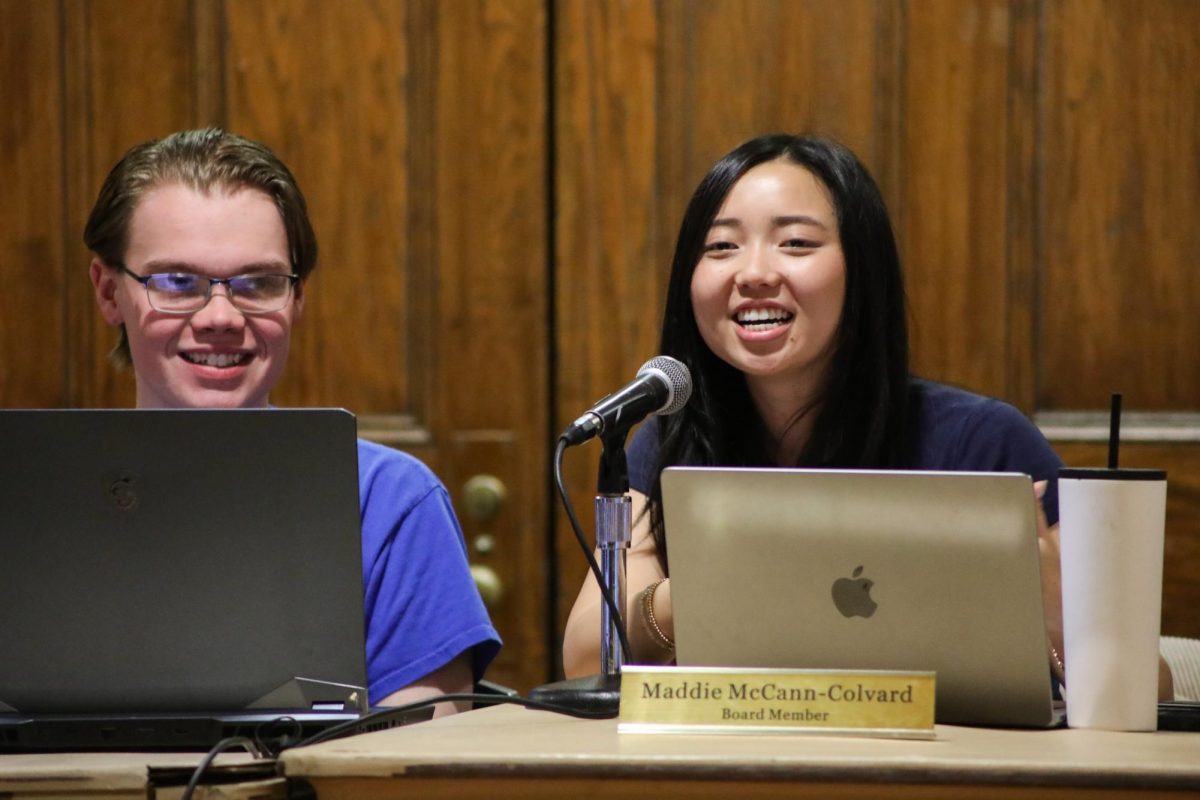Web site helps woman be a “do-gooder”
March 28, 2005
Terry Lane’s boyfriend once told her, “Nobody likes a do-gooder.” Now, the 43-year-old proven… Terry Lane’s boyfriend once told her, “Nobody likes a do-gooder.” Now, the 43-year-old proven do-gooder knows that her former boyfriend’s advice is not the case.
“There’s nothing wrong with being a do-gooder,” Lane explained proudly. “Cynical people give it a bad name.” For the last three years, Lane has collected thousands of items for less fortunate people through her Web site, www.do-gooder.org.
The catalyst for the project occurred in 2002, when Lane was volunteering for ACORN, the Abandoned Children and Orphans Resource Network, which at the time was collecting material items for young orphans in Kazakhstan. Lane decided that she would collect mittens because the children were “poor beyond our comprehension” and the Kazakhstan winters were horribly cold.
Lane used her Web experience and posted the project on the Internet. Much to her surprise, about 300 people from around the world stumbled upon the site and sent mittens to the orphans.
This was the start of her being a do-gooder.
“Wow, this is incredible. I can do this with other things,” she remembered thinking, and soon began researching other projects, posting them and in turn getting similar results.
“It doesn’t take a lot of time or money for me to do this. All I really do is get the word out,” Lane said, a philosophy which coincides with her Web site’s slogan, a quote by Edmund Burke: “Nobody made a greater mistake than he who did nothing, because he could do only a little.”
Lane explained that do-gooder costs her about $100 to run each year, and the projects selected are ones most underfunded and benefiting only the most needy.
Do-gooder.org is currently advertising clothing donations for Zambian orphans, school supplies for needy children in Tijuana, Mexico, books for a library on a Native American reservation in Ridgeview, S.D., and others.
“If someone has something to donate, I can find someone that needs it,” Lane explained.
She looks for people in need living in Third World countries and has found that many reservations in the United States have similar deplorable conditions.
“The ghetto is heaven compared to an Indian reservation,” Lane said. One Native American woman pleaded with Lane that she had no food, heat or electricity for Thanksgiving, and out of hundreds of e-mails that Lane sent out, only four or five people, including Lane herself responded, giving the woman and her family everything needed for the holiday.
“What’s $10? People go to McDonald’s and spend $10,” Lane said. She believed the problem is that people don’t see the poverty in people.
“They don’t see them,” she said. “Oh, these are real people, these are real little kids.”
Lane explained that there are several reasons that do-gooder.org is so appealing to prospective donors. The Web site does not ask for any money directly; instead, it houses a listing of projects. A visitor can look through them, find the one most appealing and then send items like clothing, books and sometimes money directly to the recipients.
The Web site has a page that posts the goals and the total number of items received. So far, 339 books have been sent to the Tiospaye High School Library, located on a South Dakota reservation, out of the goal of 1,000. When a project meets the goal or becomes self-sufficient, she removes it from the site.
“It’s ridiculous that people are in the world that don’t have shoes or a blanket when there is so much in the world,” Lane said.
Lane recently moved to Pittsburgh from Lancaster County, Pa., with her daughter Sarah. As a career writer and journalist — and a single mother — she cannot afford to travel to all the places where do-gooder.org has projects; instead she runs the Web site single-handedly from her apartment, corresponding to those orchestrating the projects through e-mail.
For more information about the Web site or to get involved with a project go to www.do-gooder.org.


